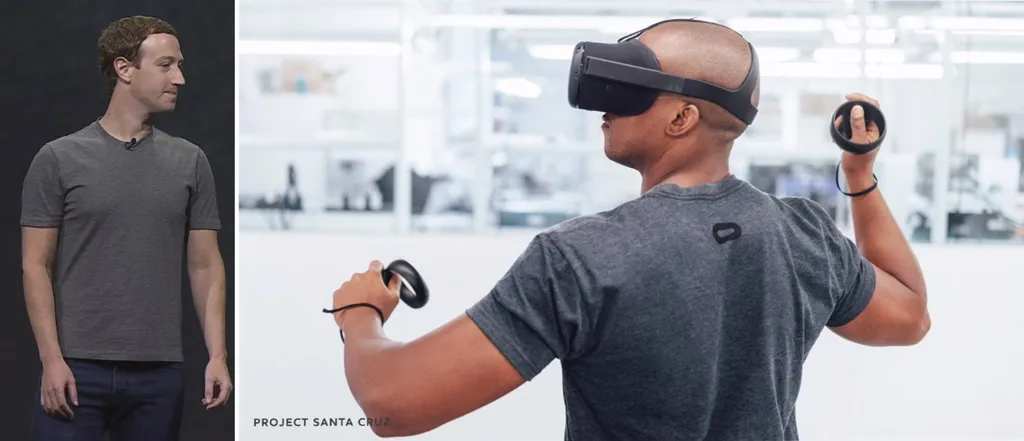Oculus offered me brief hands-on time with its Santa Cruz standalone headset prototype and full freedom of movement controllers.
I got to try the earlier version of Santa Cruz at last year’s conference and, like last year, I wasn’t allowed to shoot video of my time with the all-in-one gear. Before diving into my impressions, I’ll say that although Jamie Feltham and David Jagneaux recently tried Microsoft’s controllers with a wired PC headset, I don’t have that point of reference to compare just yet.
I tried a version of Dead & Buried and found myself spinning quickly in circles. I must have done four or five full rotations getting the zombies coming at me from all directions and, obviously, I didn’t think of getting caught in the wires once. I laughed pretty quickly because this was delightful. Put simply, Santa Cruz feels like it represents the way VR should be. The controllers ditched the analog stick from the Rift controller in favor of a touchpad — though I didn’t use the touchpad for anything in the game — and they overall felt much lighter than Touch. The headset itself slipped on easily and it was at least as comfortable as a Rift. The freedom I experienced losing that wire while enjoying hand presence is a high bar for immersion and it will be hard not to hold all future VR hardware to that standard.
After my demo I interviewed Nate Mitchell, Oculus co-founder and VP of product, and he said the version of Dead & Buried I tried inside Santa Cruz was graphically somewhere in between the mobile and PC version of the game, but closer to the mobile version. I was able to aim precisely at the zombies firing at me from above and all around. I also tried a second Santa Cruz headset with a much calmer experience called Boundless where I fed a nice little alien. Both worlds were richer and more dynamic than the more static one I tried in Santa Cruz last year, but neither matched the complexity seen inside a virtual world drawn by a fully powered PC. Just like my Rift at home I was able to see out the nose area of one Santa Cruz headset, but in the second I noticed no light leakage from the outside.
The only tracking glitch I experienced was when I deliberately turned my head to the right while holding my hand extended to my left. I turned my head back left and saw my hand snap back into position where my mind told me it was located. To be clear, this wasn’t a natural movement — I specifically tried to see the limitations of the tracking. I moved quickly around a pair of large rooms (Oculus wouldn’t specify exactly how large they were) and never lost tracking.
Oculus representatives were reluctant to speak about the specifications of Santa Cruz, and, for that matter its other standalone the $200 Oculus Go. So I’m left wondering about features like frame rate. It was a short demo and with a stated time frame of delivering Santa Cruz developer kits in the next year, Oculus has a lot of time to continue improving the way it all works.
Update: I returned for another demo of a third experience shown in Santa Cruz. It was a slow motion experience where I was on a platform defending a pod that had a person inside of it. During the slow motion mode I could pick objects out of the air and throw them at other objects to try and deflect them from destroying the pod. When I threw several objects something was off with the physics and the objects flew at super speed in directions I didn’t intend. During one impressive example of the tracking capabilities, I looked straight ahead and reached for a virtual object that was behind me without looking at it. The object wasn’t directly behind my back but only slightly to the right, and four times in a row I was able to grab the object and bring it in front of me without looking at it. I also laid briefly on the ground and the tracking still worked.
I had a very tough time noticing a screen door effect in Santa Cruz compared with what I’m accustomed to seeing in the Rift. I believe Santa Cruz uses a very nice display panel, and I asked Oculus CTO John Carmack about it after my demo. He would only say that what it uses isn’t the same as the Rift display panels. I couldn’t say whether the field of view was larger or smaller than the Rift or Gear VR — it felt in the same ballpark.





























